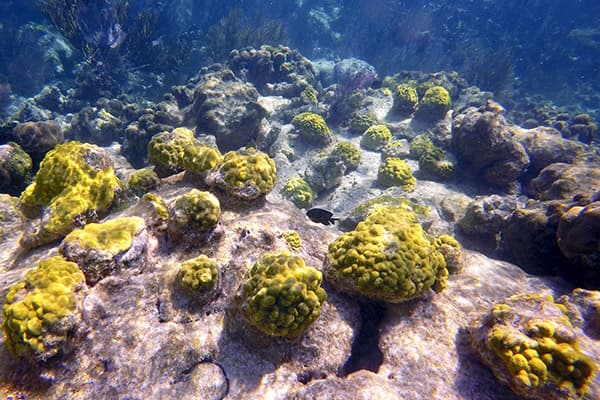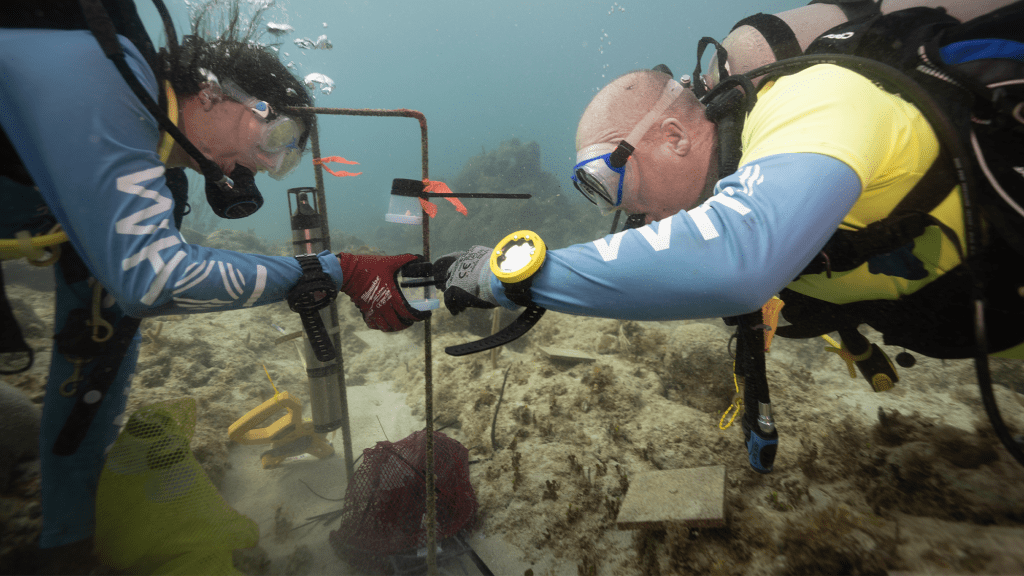Healthy reefs are recognized as lively habitats for colorful corals and fish.. Like any busy ecosystem, they have their own noises and can be quite loud. The sounds of fish and crustaceans that live there and the sounds of thriving coral growth can reverberate through the water. Young animals may use some of this sound to help them figure out where to settle or when it’s time to grow. Sharing these healthy coral reef sounds may encourage coral young to repopulate damaged or degraded coral reefs. The findings are detailed in a study published March 13 in the journal Royal Society Open Science.
One shot to settle down
As adults, corals are stationary. Their larval stage is their only opportunity to move around and find the perfect home. They swim or drift with the currents to find the right conditions to settle down and then anchor themselves to the seabed. Previous studies have shown that chemical and light signals can help affect that decision, but this new work examined the role that sound may play. They likely can sense these vibrations, since corals don’t have traditional ears.
[Related: Google is inviting citizen scientists to its underwater listening room.]
“What we’re demonstrating is that you can actively promote coral settlement by playing sounds,” Nadège Aoki, a study co-author and a doctoral candidate at Woods Hole Oceanographic Institution (WHOI), stated in a release. “You can go to a reef that is degraded in some way and add in the sounds of biological activity from a healthy reef, potentially aiding this really important step in the coral life cycle.”
Reef soundscapes
To investigate further, a team of researchers performed experiments in the US Virgin Islands in June and July 2022. They collected larvae from a hardy coral species named Porites astreoides. It is more commonly known as mustard hill coral, due to its yellow color and lumpy shape. They distributed the larvae along three reefs along the southern coast of St. John. Of these reefs, Tektite is relatively healthy. Cocoloba and Salt Pond are more degraded, having fewer fish and less coral cover.

The team installed an underwater speaker system at the Salt Pond reef and placed cups of larvae at distances of 3.2, 16.2, 32.8, and 98.4 feet from the speakers. For three nights, they then played healthy reef sounds at Salt Pond that were recorded at Tektite in 2013. They also set up similar installations at Tektite and Cocoloba, but did not play any of the recorded reef sounds.
After collecting the cups, they found that significantly more coral larvae had settled in the cups at Salt Pond than the other two reefs. The larvae settled there an average of 1.7 times higher in the enriched sound environments than in the ones that were not. The cups that were about 16 feet from the speakers saw the highest rate of larvae settlement, but even the cups that were almost 100 feet away had more larvae settling at the bottom than those where the sounds were not played.
The researcher Aran Mooney, who works at WHOI as a marine biologist, mentioned that the decrease in settlement with distance from the speaker, while keeping all other factors the same, is important. He stated that this change is due to the added sound and not other factors. said in a statement. This offers a new tool for potentially rebuilding a reef.
The team was surprised to find that there was not a large difference between the settlement rates at the more-degraded Cocoloba and the healthier Tektite reefs. A 2018 study found higher settlement rates at Tektite than Cocoloba, which may be due to natural variations. However, the Tektite reef has recently experienced destructive hurricanes, significant bleaching, and an outbreak of coral disease.
supported the idea that the complexity of Tektite’s soundscape has diminished over the last decade. The conditions there might not be as good as initially thought, but this is uncertain.
A new potential tool for reef restoration
According to the authors, the potential drop in settlement rates at Tektite illustrates how severe the threats facing coral reefs are and the urgent need for scalable solutions. Coral reefs play a crucial role in protecting the coast, providing tourism and food opportunities, and supporting marine life. and they need rapid, scalable solutions. Coral reefs protect the coast from storm waves and erosion, provide tourism and food opportunities for millions of people, and By some estimates, the planet has lost half of its coral reefs in the past 30 years. Sandy ‘Reef Stars’ help bring life back to coral reefs hurt by dynamite fishing. The team hopes their work can help shape future coral restoration efforts. Enhanced soundscapes may be used to increase settlement rates in coral nurseries or be broadcast at reefs in the wild. It would still require human monitoring, but it could be a relatively easy restoration technique to implement.
[Related: “Replicating an acoustic environment is actually quite easy compared to replicating the reef chemical and microbial cues which also play a role in where corals choose to settle,” study co-author and WHOI microbial ecologist Amy Apprill.]
said in a statement.
Stated by the WHOI microbial ecologist Amy Apprill, this seems to be one of the most scalable tools for rebuilding reefs, offering exciting potential. The noises made by fish and crustaceans could signal to the larvae to settle. “It appears to be one of the most scalable tools that can be applied to rebuild reefs, so we’re really excited about that potential.”









